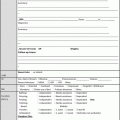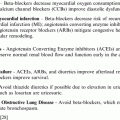Stethoscope
Blood pressure cuff
Thermometer
Pen light
Prescription pad
Pharmacopeia
Toe nail clippers
Examination gloves
Syringes and needles
Sharp containing box
Scissors
Street map or GPS
During the home visit, address the patient’s medical condition, review all medications, assess the patient’s functional status, memory and cognitive ability, and level of independence (ADLs and Instrumental ADLs). For patients with physical limitations, assessment of functional status can identify the need for adaptive equipment. Assistive devices and durable medical equipment such as a walker or bedside commode can aide a person in remaining independent in the home and delay institutionalization.
A house call may also identify the need for home adaptation, remodeling, or retrofitting that can improve home access, safety, and mobility. Caregiver assessment is also important in determining a plan of care that can be successfully implemented in the home (Table 2 lists some important aspects of a home assessment). Monitoring for caregiver burnout is essential.
Table 2
Assessment in the Home
Patient assessment |
Functional assessment |
Mental/cognitive assessment |
Nutritional assessment |
Medication use and compliance |
Advance care planning |
Caregiver assessment |
Assessment of burden of caregiving |
Assessment of caregiver |
Environmental assessment |
Safety in the home |
Needs for durable medical equipment |
Community assessment |
Safety of neighborhood for health care providers |
Availability of community resources |
Billing for Services
Under current Medicare rules, any licensed physician, nurse practitioner, or physician assistant, can make a house call and bill for services rendered. Practitioners use CPT codes for the level of service provided [8]. Most third party payers follow the rates and guidelines for billing set forth by Medicare and Medicaid. Physicians are also allowed to bill based on the amount of time directly spent with or in counseling the patient. It is important that each component of the patient encounter be appropriately documented for the level of service coded (see Table 3). Note that practitioners are not allowed to bill for travel time associated with making a house call. Numerous versions of mobile-capable electronic health records (EHR) have the ability to document and to coordinate the exchange of patient information such as medication reconciliation, laboratory results, and diagnostic studies.
Table 3
Medicare part B reimbursement 2015a
New patients | Established patients | ||
|---|---|---|---|
Code | Reimbursement | Code | Reimbursement |
99341 | $52.58 | 99347 | $53.16 |
99342 | $76.69 | 99348 | $80.62 |
99343 | $125.21 | 99349 | $122.76 |
99344 | $174.89 | 99359 | $170.08 |
Agency Home Health Care
Under current Medicare guidelines beneficiaries who have a documented need for episodic care may be eligible for home health care. The purpose of home health care is to have an interdisciplinary team of qualified health care providers (see Table 4) to provide assistance in the home for a person who requires skilled nursing care, physical therapy, speech therapy, and other services. Often a referral is made when the physician notes a patient decline in health and level of function that places the patient at risk for hospitalization or institutionalization [7]. At other times, home health care can assist in delivery of palliative care in seriously ill patients who are ineligible for hospice or have chosen not to enroll in hospice [11].
Table 4
Members of the Home Health Care Team
Skilled nurse |
Physical therapist |
Speech therapist |
Occupational therapist |
Home health care aide |
Social worker |
Case manager |
Wound care nurse |
Requirements for Agency Home Health Care
There are important requirements that must be met before a physician can order home health care for a Medicare beneficiary. First, a physician must determine that the patient meets the requirement for “homebound” status and secondly has a need for episodic skilled nursing care, physical therapy, or speech therapy. The interpretation of homebound status often leads to confusion. Its definition is explained in Table 5 .
Table 5
Definition of Homebound Status
A patient is considered home bound if “leaving the home would require a considerable and taxing effort” and if the patient “has a condition due to illness or injury which restricts ability to leave the residence except with the aid of supportive devices, the use of special transportation, or the assistance of another person, or if the patient has a condition such that leaving the home is medically contraindicated.” Homebound patients may leave the home “if absences are infrequent or for periods of relatively short duration … or for the purpose of receiving medical treatment” |
For the initial Home Health certification , the Affordable Care Act (ACA) now requires that the certifying physician document that the physician himself or herself, a resident physician, or a non-physician practitioner (NPP) working with the physician has had a face-to-face encounter with the patient. This encounter must have addressed the medical condition for which this episode of home health care is being ordered. The documentation of a face-to-face encounter must occur within 90 days prior to the start date of home health care or within 30 days after the start of care. This encounter is only required for the initial certification period and not recertification. The documentation for necessity includes the name of the certifying physician, date of the face-to face encounter, the patient’s homebound status, the need for skilled services, and a signature and date from the ordering physician. The face-to-face encounter can be performed by a resident physician in training under the supervision of the teaching physician, or a nurse practitioner, clinical nurse specialist, certified midwife, and physician assistant (all must be under the supervision of the certifying/signing physician). The face-to-face documentation can be included in the certification document, a separate standardized form or via telehealth [12].
At times, the home setting may not be the best venue to provide and coordinate complex care, especially for very frail patients with multiple health care needs. In such cases, options may include admission to a rehabilitation center , a long-term acute care hospital (LTAC) or a skilled nursing facility. Any physician involved with the patient’s care may order home health. Many patients now leave the hospital with a referral for home health care services in an attempt to reduce readmission to the hospital within 30 days and to avoid financial penalties to the hospital.
Home health care can improve transitions in care through medication reconciliation, patient and caregiver education related to the recent hospitalization, symptoms that warrant medical attention, and ensuring practitioner follow-up [13]. Multiple medical providers are often involved in patient care as the patient transitions to another health care setting. Effective communication among providers during these “transitions in care” is paramount to ensuring that providers are aware of any changes in the patient’s needs and plan of care [14–16].
A physician can provide a written or verbal order to the home health agency to begin services. The referral should include information on the patient’s overall functional status as well as the primary reason for the referral while keeping the patient’s goals and purposes in mind. Background information regarding the caregivers in the home and any concerns should be shared with the home health agency. This information can help identify potential barriers that can affect patient outcomes.
Members of the Team
Delivering effective home health care depends on each member of the health care team using their skill set aimed at restoring health according to patient needs [17], while negotiating health care goals with the patient and family and then developing a plan of care that can sustain efforts to reach these goals. The home health team has regular contact with the patient’s family and is in a position to ascertain whether a plan of care can be successfully implemented in the home (or elsewhere).
Stay updated, free articles. Join our Telegram channel

Full access? Get Clinical Tree





